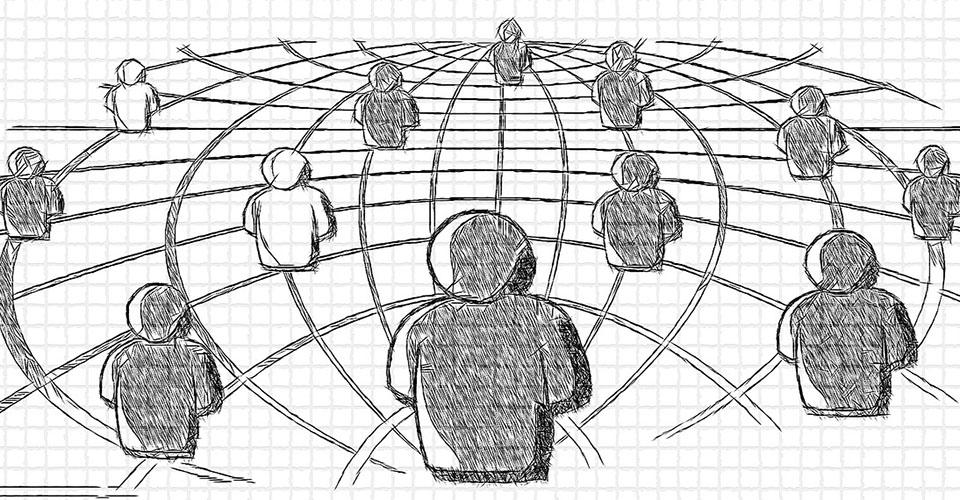
Seliina Päällysaho, Anne Kärki, Hannu Hyyppä & Katja Laitila
The operating culture and models of open science and research have been developed in Finland already for some ten years. In international terms, Finland has long been considered a trailblazer in the field. Our key strengths in ensuring the success of this development have included effective cooperation and the inclusion of various stakeholders at the national level. The development work has been implemented jointly by universities of applied sciences in close cooperation with universities, research institutes, funders, libraries and archives. In addition, the national coordination of open science and research has played a crucial role in driving the development. As a result, effective and open cooperation has enabled swift progress and prevented overlapping efforts.
Extensive benefits through open publications and research data
Universities of applied sciences have succeeded in adopting and integrating an open operating culture into their activities. The fastest development has been seen in the openness of publication. All universities of applied sciences are committed to open publication in accordance with the 2009 statement of Arene, the Rectors’ Conference of Finnish Universities of Applied Sciences. This commitment also translates to practice. The share of open publications in all publications has increased dramatically over the recent years. According to Arene, more than 70% of the publications produced at universities of applied sciences were publicly accessible in 2018. This helps publications reach their target audiences as comprehensively as possible while improving the visibility and impact of the publications.
So far, universities of applied sciences have not been similarly successful in granting public access to research data. However, a recent increase has been observed in the awareness on the importance of providing more extensive access to research data produced at universities of applied sciences. Providing access to data can have economic, social, political and ecological benefits for universities of applied sciences, but also for the corporate sector. Data as the new oil has been discussed ad nauseam, but its mere existence is not sufficient. Data must be discoverable, accessible, interoperable and reusable. It often has no value without further processing. Therefore, it is imperative for universities of applied sciences to promote the reuse of the most useful data in numerous ways.
Open Education – the latest initiative
Open Education is an internationally developing concept that has emerged alongside open science and research. Open Education will be outlined in 2021–2022 to determine the national objectives in its area for each party organising teaching activities in the future. Open learning materials and digitalisation create more open practices for learning and teaching while enabling learning and teaching that are not tied to time and place.
The openness of education includes novel, flexible learning practices that foster continuous learning at the different stages of life as such learning is required in the future. To ensure the openness of learning environments and materials, accessibility must be taken into account. All learners value accessible high-quality learning materials and environments. On the other hand, openness increases the demands on education providers and the authors of learning materials. Consequently, both support and training are necessary.
The monitoring of open science and research develops, but how?
The state of open science and research in higher education institutions was monitored through three reports in 2015, 2016 and 2019. These reports indicated significant development in the operating culture of research organisations. In the 2019 report, the highest maturity level on the five-step scale was reached by nine universities and seven universities of applied sciences. Future objectives include continuing to produce data on the development of the Finnish research community. Jointly devised national policies concerning open science and research define new objectives and include both short and long-term plans on measures to support the development. Without monitoring, it is impossible to assess the progress towards the objectives.
National monitoring can utilise existing data resources and emerging data sources. Surely information sources alone cannot adequately describe the situation of Open Education as open learning materials are not yet reported systematically. Similarly, development is still required to enable gaining credit through open learning materials or data.
In the future, the Research.fi service will prove an excellent data resource that has potential for further development in outlining both open research and open learning. This data resource will integrate qualitative data on the expertise and activities of researchers and teachers. Perhaps, however, the data resource’s take on open science, research and education is primarily focused on research as the resource’s name suggests. That is precisely why a wider range of data resources is required.
Is the world open yet?
Openness is gaining ground in the planning and implementation phases of RDI projects. The openness of RDI projects’ operating culture contributes to gradual production of open data throughout the projects’ life cycles. Consequently, the work performed in an RDI project produces instantly and genuinely accessible results contributing to solutions that promote a more sustainable society.
Regardless of the favourable development of open science and research, there is still plenty of work ahead. Recently, the price of openness has become a hot topic. As the openness of research develops, attention must be paid to preventing excessive increase of the costs of openness. For the time being, costs have been discussed mainly in connection with open publication, but more extensive cost monitoring on the different aspects of openness is certainly required. Higher education institutions should be aware of the total costs of openness. On the other hand, it is good to note that while openness comes with costs, it can save time and resources and reduce overlapping work in the long run.
This issue (2/2021) of UAS Journals, themed “Open RDI activities and Open Education at universities of applied sciences”, contains a total of 13 articles that were participated in by nearly 40 experts. The articles discuss topical issues in the fields of open RDI activities and Open Education. The delightfully diverse range of themes presents both pedagogical solutions and individual operating models. A great deal of development work is also carried out through projects. However, several articles highlight the importance of cooperation, and the development of an open operating culture requires extensive competence and the ability to combine different perspectives. They also shed light on challenges that are important to be aware of.
We hope that these articles serve as a source of inspiration to all universities of applied sciences and pass on good practices worth trying. The world is not open yet.
Authors
Seliina Päällysaho, Ph.D., M.Sc. (Econ.), Research Manager, Seinäjoki University of Applied Sciences
Anne Kärki, D.Sc. (Tech.), Principal Lecturer, Satakunta University of Applied Sciences
Hannu Hyyppä, D.Sc. (Tech.)., Professor, AALTO University
Katja Laitila, M.Soc.Sc., Information Specialist, Häme University of Applied Sciences






